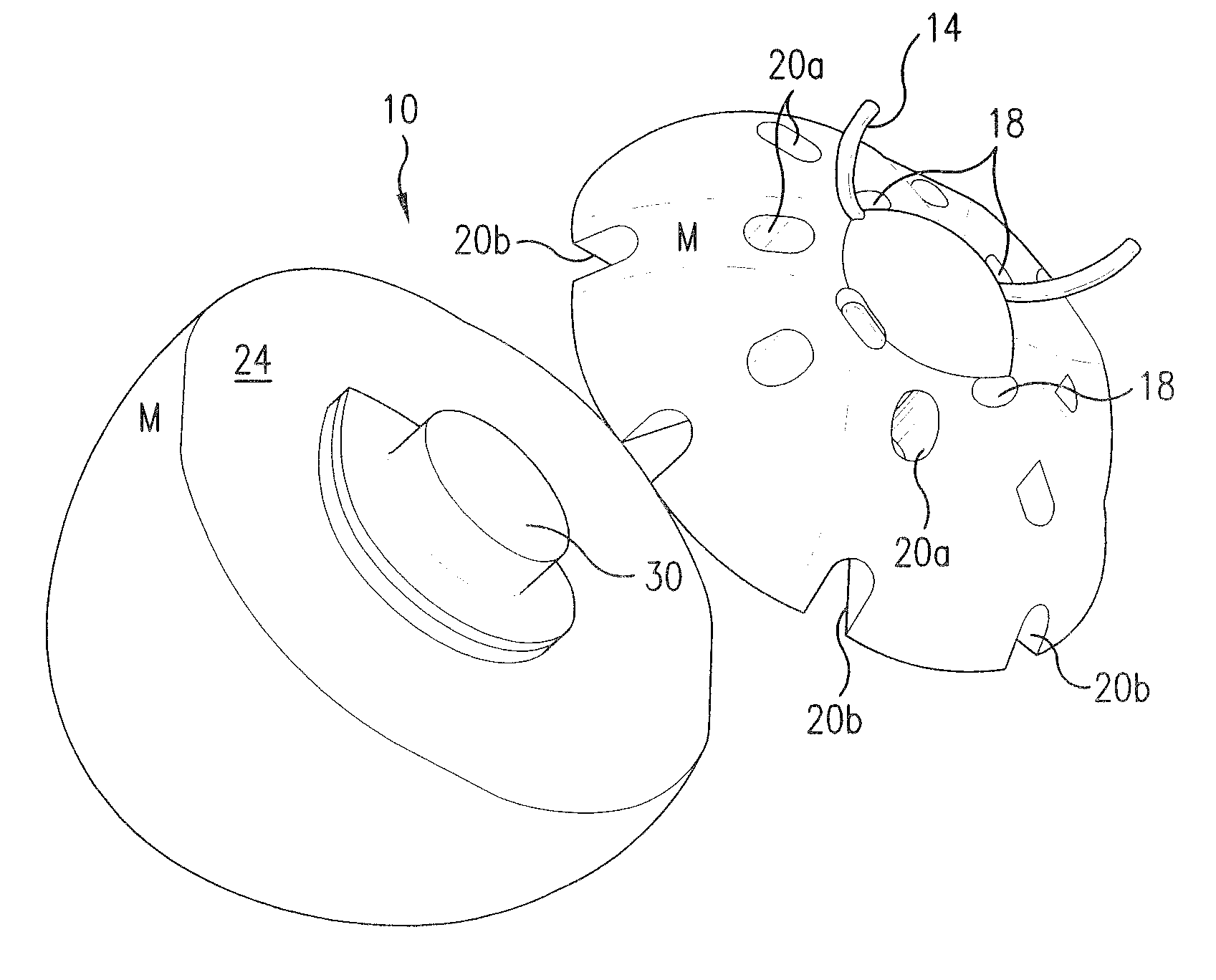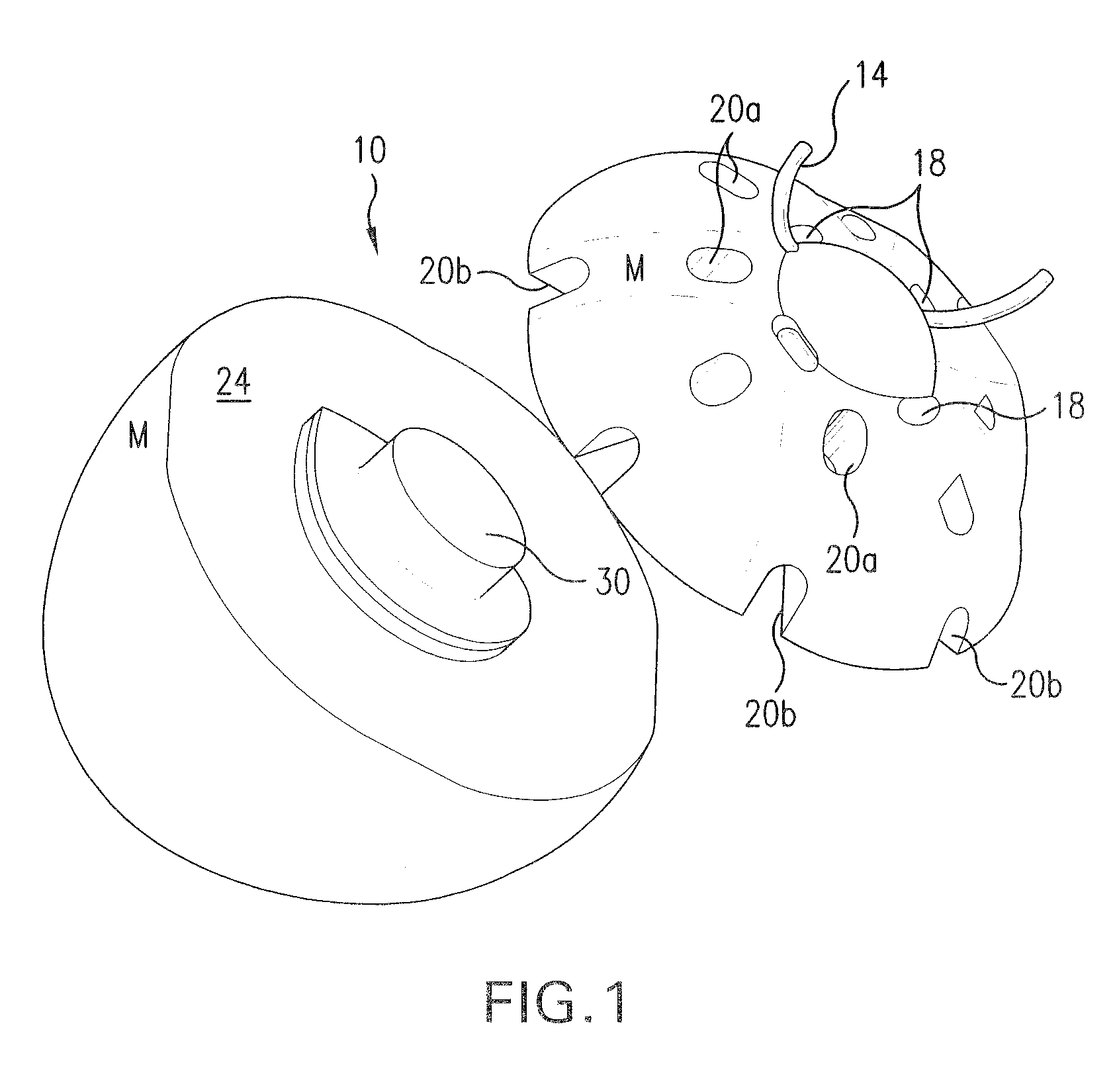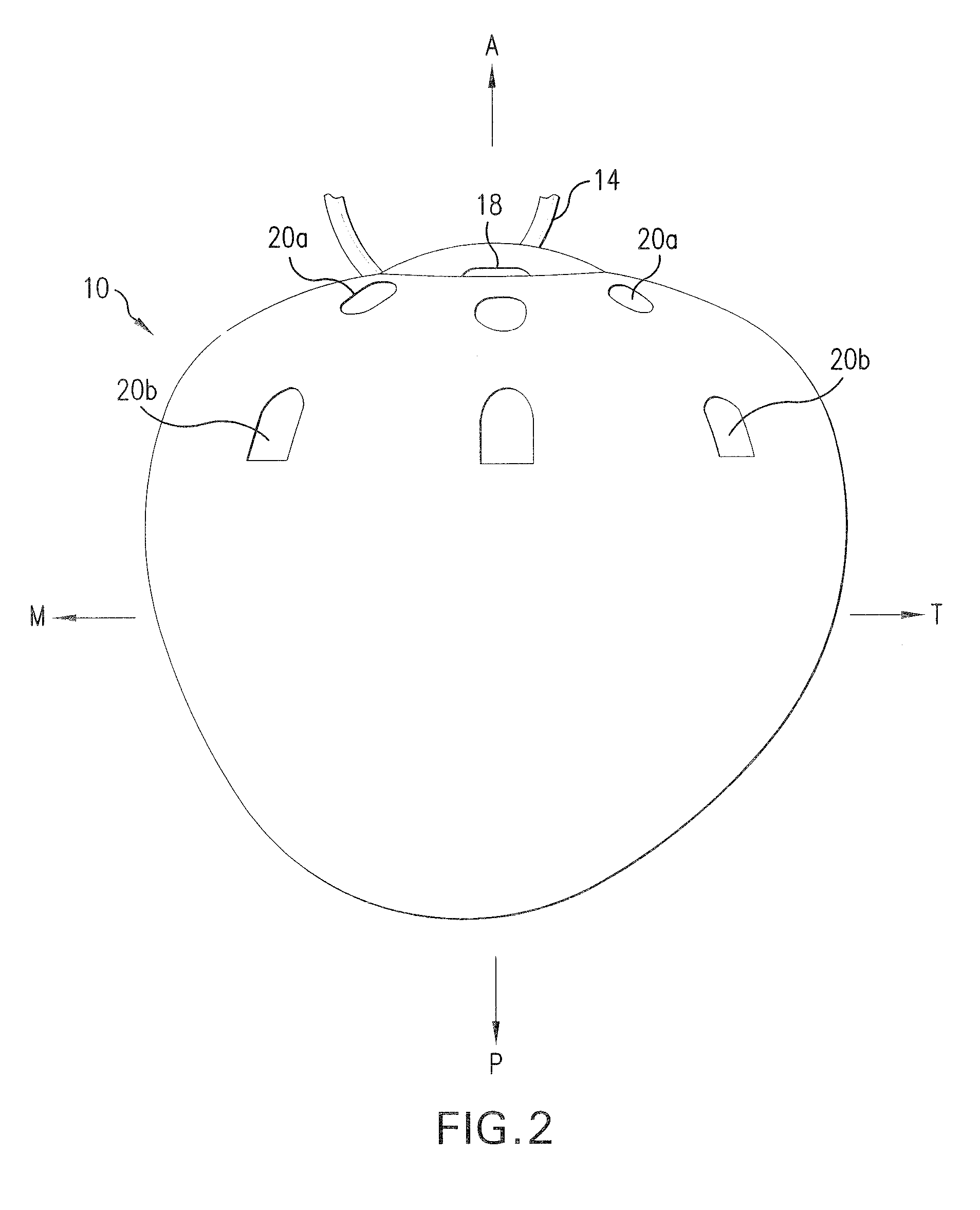Quasi-spherical orbital implant
a quasi-spherical, implant technology, applied in the field of eye replacement implants, can solve the problems of more difficult for the prosthesis to undesiredly rotate in the orbit, and achieve the effects of improving the motility improving the grip of the implant, and improving the mobility of the prosthetic ey
- Summary
- Abstract
- Description
- Claims
- Application Information
AI Technical Summary
Benefits of technology
Problems solved by technology
Method used
Image
Examples
first preferred embodiment
[0044]FIGS. 1 and 5-8 show a first preferred embodiment of the present invention which comprises all the general features described above in addition to the specific features described below. The first preferred embodiment is comprised of a polymer such as acrylic. As described above, the implant 10 is preferably manufactured in two pieces 22, 24. The two pieces 22, 24 are then combined by any suitable means. The preferred means of assembling the two pieces 22, 24 for the acrylic implant 10 is ultra-sonic welding, which is known in the art. As shown in FIGS. 1 and 7, there is an elevated portion 30 on the surface of the posterior portion 24. This elevated portion 30 is adapted for insertion into a correspondingly shaped indentation (not shown) on the underside of the anterior portion 22. The elevated portion 30 is preferably semi-elliptical; however it can be any shape as long as the two portions 22, 24 can only fit together when the portions 22, 24 are orientated in their proper po...
second preferred embodiment
[0047]FIGS. 9-12 and 12a show a second preferred embodiment of the present invention which comprises all of the general features of the invention described above in addition to the features described below. The second preferred embodiment is comprised of a biomaterial that is elastomeric or an elastomer polymer such as silicone. In this embodiment, the anterior portion 22 and posterior portion 24 are adapted to be snapped together, since silicone cannot be welded. The preferred means for combining the two pieces in this embodiment is shown in FIGS. 12 and 12a, wherein tentacles 26 that are attached to the anterior portion 22 are placed through corresponding openings 25 in the posterior portion 24. The tentacles 26 have an enlarged portion 27 which cannot easily be removed from the openings 25 after being inserted into the openings 25. Once inserted into the openings 25, the enlarged portions 27 lock or snap the two portions 22, 24 together. Preferably there are two tentacles 26 so t...
third preferred embodiment
[0050]FIG. 14 shows a third preferred embodiment of the implant 10 of the present invention wherein the valleys 11 and mounds 12 are more pronounced than in the first two embodiments. This embodiment can be manufactured with the characteristics of either the first or the second embodiment, with the only difference being the increased definition of the valleys 11 and mounds 12 on the anterior portion 22. The third preferred embodiment is still a quasi-sphere, however, the larger valleys 11 and mounds 12 help to increase the keying of the implant 10 on the ocular prosthesis for more motility and reduce the potential for rotation of the ocular prosthesis. The third preferred embodiment does not have an astigmatism in the anterior portion 22 because of the more pronounced valleys 11 and mounds 12. The third embodiment is not as likely to work well with stock prosthesis because of the more pronounced valleys 11 and mounds 12.
PUM
 Login to View More
Login to View More Abstract
Description
Claims
Application Information
 Login to View More
Login to View More - R&D
- Intellectual Property
- Life Sciences
- Materials
- Tech Scout
- Unparalleled Data Quality
- Higher Quality Content
- 60% Fewer Hallucinations
Browse by: Latest US Patents, China's latest patents, Technical Efficacy Thesaurus, Application Domain, Technology Topic, Popular Technical Reports.
© 2025 PatSnap. All rights reserved.Legal|Privacy policy|Modern Slavery Act Transparency Statement|Sitemap|About US| Contact US: help@patsnap.com



